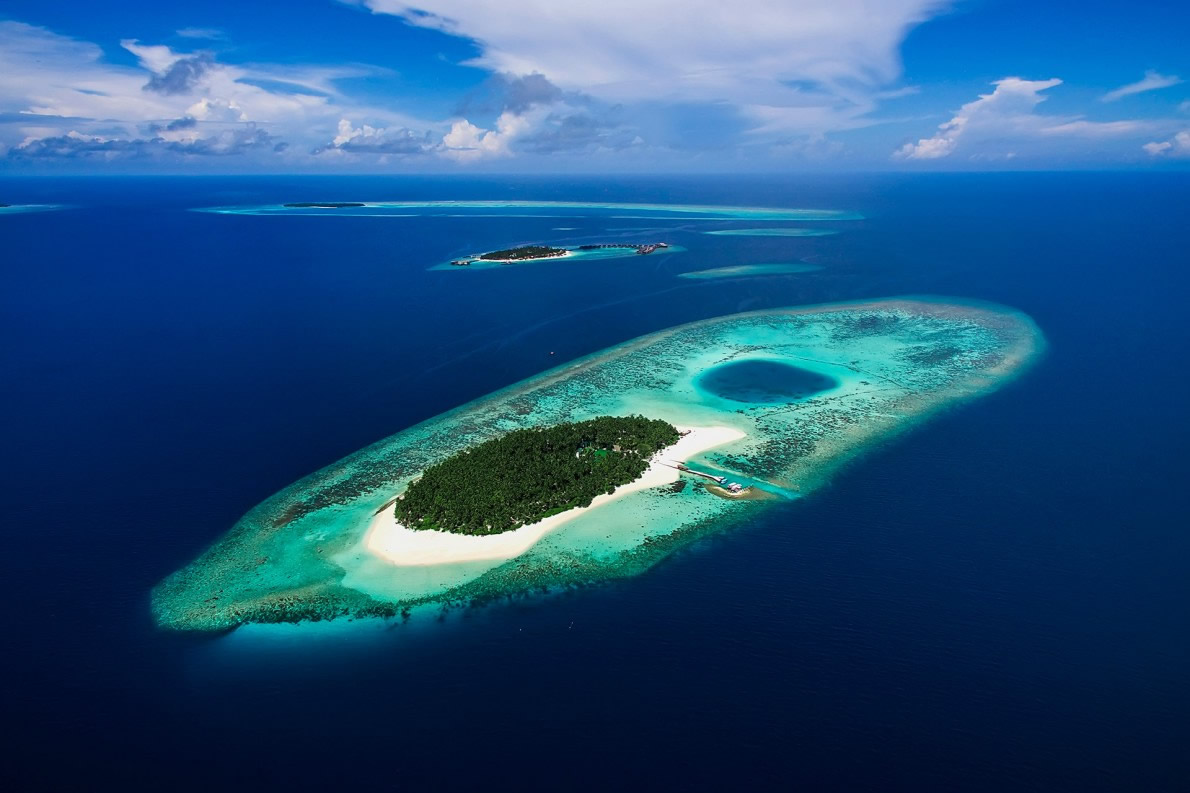| Booking.com |

|
 |
|
Maldives to Launch New Tourism Initiative to Market Individual Atolls |
|||||||||||
Maldives' Atolls |
|||||||||||
February 26, 2019 |
|||||||||||
Maldives is ready to launch a new tourism initiative to capitalise on the distinct features of each atoll. In his first presidential address, President Ibrahim Mohamed Solih told the parliament on February 7 that tourist destinations will be developed and divided into zones, with marketing strategies focused on informing tourists of the singularity of these zones. This will allow tourism to flourish across the country from north to south, he said. The president, however, did not give details. The Maldives comprises of 26 natural atolls consisting of dual island chains. Incidentally the Maldivian language has the distinct pleasure of contributing to the English word “atoll”, which was derived from the Maldivian word “atholhu”. There are channels of various sizes between the atolls used for navigation. For efficient administrative functioning, the 26 natural atolls are categorised into 20 administrative divisions. Particularly the island nation is located in a strategic area with access to major international sea routes in the Indian Ocean. The Maldives, located on top of a vast underwater mountain range have around 1190 islands and sandbanks. The pearl string like islands covers a land area of no less than 298 km2. All the islands are encircled by a lagoon blessed with crystal clear water. These islands are protected by a reef structure, housing one of the most exclusive and spectacular underwater life. Meanwhile, the Maldives welcomed a record 1.4 million tourists in 2018. It was a 6.8 per cent increase from the 1,389,542 tourists that chose to holiday in the Maldives in 2017. Other factors such as average duration of stay, bed nights and occupancy also posted positive growth in 2018. Despite major increases in accommodation capacity across all segments, including resorts (up 57 per cent), guesthouses (17.2 per cent), hotels (27.9 per cent) and safari vessels (9.5 per cent), the average occupancy rate recoded a slight growth of one per cent in 2018 compared to the previous year. The occupancy rate remained at above 60 per cent throughout the year, except for four months during the traditionally off summer season. Average duration of stay also increased by 0.2 per cent to reach 6.4 days in 2018 compared to the previous year. Total bed nights stood at 9,470,379, which was an increase of 10.2 per cent over 2017. This positive growth in the tourism industry comes amidst concerns by private organisations representing industry stakeholders such as the Maldives Association of Travel Agents and Tour Operators (MATATO) over the lack of effort and budget to promote the Maldives as a destination. These concerns come as the world-famous holiday destination struggles to match an increased bed capacity. Over the past few years, dozens of uninhabited islands have been leased to local and foreign resort developers. Several international brands have entered into the market, increasing the number of resorts to more than 130. That number is set to increase as another 20 resorts are expected to open over the next two years. Along with the new resort openings come the challenge of increasing demand from budget travellers who choose guesthouses over luxury resorts that the Maldives is known for. The guesthouse sector has rapidly expanded with over 500 guesthouses in operation today. The previous government announced steps to maintain a structured growth in tourism, including a slowdown in leasing islands for resort development and increased marketing efforts in key markets such as China and the Middle East in order to reach an ambitious target of a record 1.5 million tourist arrivals this year. The new government has pledged to ramp up tourism promotion. Reflecting the new government’s pledge, the state budget for 2019 includes MVR 104,200,000 (USD 6.7 million) for tourism promotion, up from MVR 34,733,333 (USD 2.2 million) this year and the previous year. |
|||||||||||
 |
|||||||||||
Over a million tourists from across the globe visit the Indian Ocean island nation every year to holiday in one of the 140 plus resorts and over 500 guesthouses located in all corners of the country. The multi-billion dollar tourism industry, which is the country’s main economic activity, relies heavily on the domestic transport infrastructure, especially air travel. Maldives, the most dispersed country on the planet with 1,192 islands spread over roughly 90,000 square kilometres, already has 12 airports, including three international airports. The government has contracted both local and international companies to develop additional domestic airports across the archipelago in a bid to boost tourism. Meanwhile, a USD 800 million mega project has been launched to expand and upgrade the main Velana International Airport. The project involves building a brand new runway, an international passenger terminal and a seaplane terminal as well as other support facilities, including a fuel farm that can store 45 million litres and a 120,000 tonne cargo facility. Seats are now available for purchase through Manta Air’s authorised Passenger Sales Agents (PSAs) and direct booking from the Manta Air website: www.mantaair.mv. For more details, please visit the official website or call the airline’s reservations number 3314477 or 7994405 during business hours. |
|||||||||||
Related Pages |
|||||||||||
|
|||||||||||
|
|||||||||||
|
|||||||||||
|
|||||||||||
|
|||||||||||
|
|||||||||||
|
|||||||||||